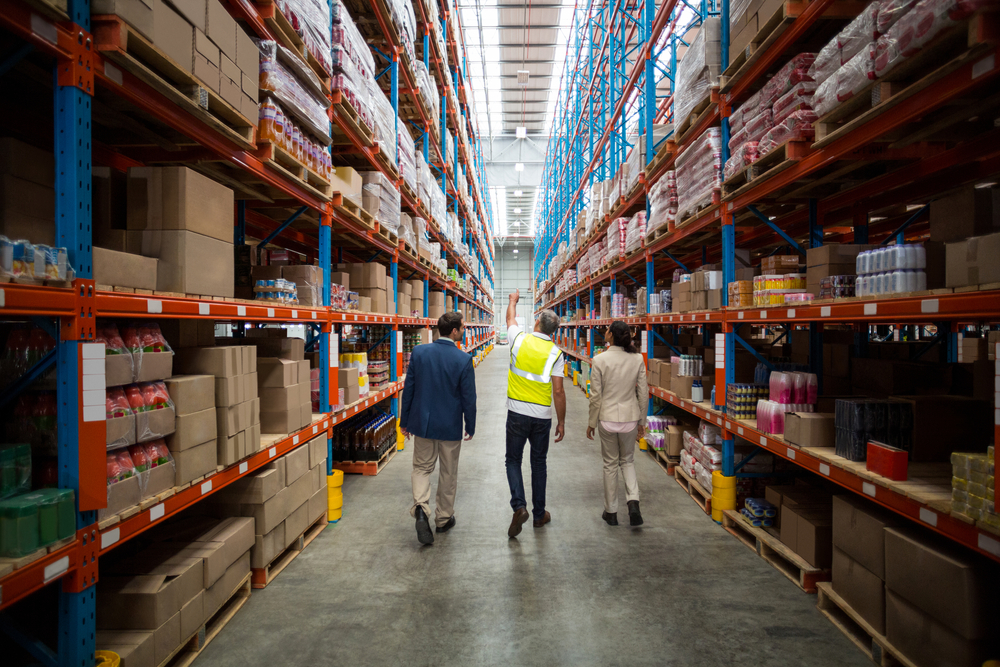
Safety First: Essential Warehouse Practices to Ensure a Secure Work Environment
In any warehouse, safety should always be the top priority. With the fast-paced nature of warehouse operations, it can be easy to overlook the importance of maintaining a safe work environment. Whether you’re a seasoned warehouse employee or a new hire, it’s essential to understand the necessary safety practices to ensure a secure work environment for everyone on the team. From proper equipment handling to effective communication protocols, there are a variety of key practices that must be followed to prevent accidents and injuries. In this blog post, we’ll explore some of the essential warehouse practices that should be implemented to maintain a safe and secure work environment. Whether you’re a warehouse manager looking to improve safety protocols or an employee wanting to ensure your own well-being, this guide will provide valuable insights into the best practices for keeping everyone in the warehouse safe. By following these essential guidelines, you can help prevent accidents and injuries while improving overall productivity and efficiency in the warehouse. If you’re interested in warehouse safety best practices and materials handling solutions, check out the article at https://industrywired.com/warehouse-safety-best-practices-and-materials-handling-solutions/.
Conduct regular safety inspections
Conducting regular safety inspections is one of the most essential warehouse practices to ensure a secure work environment. Safety inspections allow you to identify potential hazards and risks in the workplace, such as damaged equipment, unsafe working conditions, or improperly stored materials. To conduct effective safety inspections, it is important to have a detailed checklist that covers all areas of the warehouse, including storage areas, loading docks, and office spaces. Safety inspections should be carried out on a regular basis and should involve all employees, who should be encouraged to report any safety concerns they may have. By conducting regular safety inspections, you can minimize the risk of accidents, injuries, and property damage, and create a safer work environment for everyone in your warehouse.
Implement a hazard communication program
Implementing a hazard communication program is a crucial step towards ensuring a safe and secure work environment in any warehouse or industrial setting. This program involves the identification of all hazardous chemicals present in the workplace and communicating the associated risks to employees through labels, safety data sheets, and training programs. By implementing such a program, employers can ensure that employees are equipped with the necessary knowledge and training to identify and avoid potential hazards, preventing accidents and injuries. It is important to regularly review and update the hazard communication program to ensure it remains relevant and effective in addressing any new hazards that may arise. A comprehensive program not only protects employees but also helps to maintain regulatory compliance, reducing the risk of penalties and fines.
Train employees on safety procedures
One of the most important steps in maintaining a secure work environment in a warehouse is to train employees on safety procedures. Employees who are well-informed on safety guidelines are less likely to encounter accidents and injuries. It is essential to create a safety training program that covers all the necessary procedures and guidelines. This program should be comprehensive and include emergency procedures, the proper use of equipment, and the importance of wearing appropriate personal protective equipment. Regular safety training sessions will ensure that employees are up-to-date with the latest safety procedures and guidelines, reducing the risk of accidents and injuries in the workplace.
Provide proper personal protective equipment
When it comes to ensuring a safe work environment in a warehouse setting, providing proper personal protective equipment (PPE) is a crucial practice. PPE refers to any equipment or clothing that is designed to protect workers from injury or illness in the workplace. The type of PPE required will depend on the nature of the work being performed and the hazards present in the environment. Some examples of PPE commonly used in warehouses include hard hats, safety glasses, earplugs, gloves, and safety shoes. It is the responsibility of the employer to provide employees with adequate PPE, train them on how to use it properly, and ensure that it is in good condition. By providing proper PPE, employers can help to prevent injuries and illnesses, and ensure that workers feel safe and protected while on the job.
Use proper lifting techniques
Proper lifting techniques are essential for ensuring a secure work environment in a warehouse. Improper lifting techniques can lead to serious injuries, including strains, sprains, and even spinal cord damage. As a result, it is imperative that all employees are trained in proper lifting techniques and encouraged to use them consistently. To lift properly, employees should always keep their backs straight, bend at the knees and hips, and lift with their legs, not their backs. Additionally, heavy items should be lifted with the help of a partner or a lifting aid, such as a dolly or a forklift. By following these guidelines, employees can minimize the risk of injury and create a safer work environment for everyone.
Ensure proper storage of materials
One of the essential warehouse practices to ensure a secure work environment is to ensure proper storage of materials. This involves identifying and utilizing proper storage methods for different types of materials, including hazardous materials. Adequate measures should be taken to avoid situations that may lead to accidents or injuries caused by improper storage, such as falling objects or chemical spills. Proper labeling of materials is another critical aspect of ensuring proper storage, as it enables employees to identify materials easily and handle them according to their nature. Regular inspections of storage areas to ensure compliance with safety guidelines and regulations should also be conducted to prevent risks and hazards. By ensuring proper storage of materials, you can maintain a safe work environment for your employees and minimize the risk of accidents and injuries in your warehouse.
Keep work areas well-lit
Keeping work areas well-lit is a crucial aspect of ensuring a safe and secure warehouse environment. Poor lighting can lead to accidents and injuries, as it can hinder workers’ ability to see potential hazards or obstacles in their path. When designing work areas, it is important to consider the type and location of lighting fixtures to ensure adequate coverage and brightness. Regular maintenance of lighting systems is also essential to ensure that bulbs are replaced promptly and that any broken or malfunctioning fixtures are repaired or replaced as soon as possible. By prioritizing proper lighting in your warehouse, you can mitigate risks and create a more efficient and safe working environment for your employees.
Have emergency response plan ready
Having an emergency response plan ready is essential to maintaining a secure work environment in a warehouse setting. Accidents and emergencies can happen at any time, and having a plan in place can help minimize damage and injury. The emergency response plan should outline what to do in case of a fire, medical emergency, natural disaster, or any other unexpected event. This plan should be communicated to all employees and regularly reviewed to ensure that all staff members know the proper procedures to follow in an emergency situation. It is also important to designate and train employees to be first responders and have access to necessary emergency equipment, such as fire extinguishers and first aid kits. By having an emergency response plan ready, you can help ensure the safety of your employees and minimize the impact of any unforeseen events.
Conclusion
Creating a safe work environment in a warehouse requires a combination of proper training, equipment maintenance, and strict adherence to safety protocols. By implementing the essential practices discussed in this post, employers can ensure that their employees are protected from potential hazards and injuries. A secure work environment not only increases employee morale and productivity, but it also helps businesses avoid costly legal and financial consequences associated with workplace accidents. Employers should prioritize safety and make it an integral part of their warehouse operations to ensure that everyone goes home safe and sound at the end of each workday.


